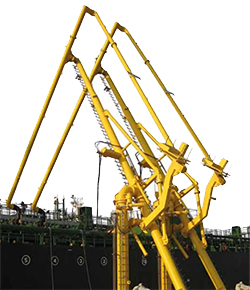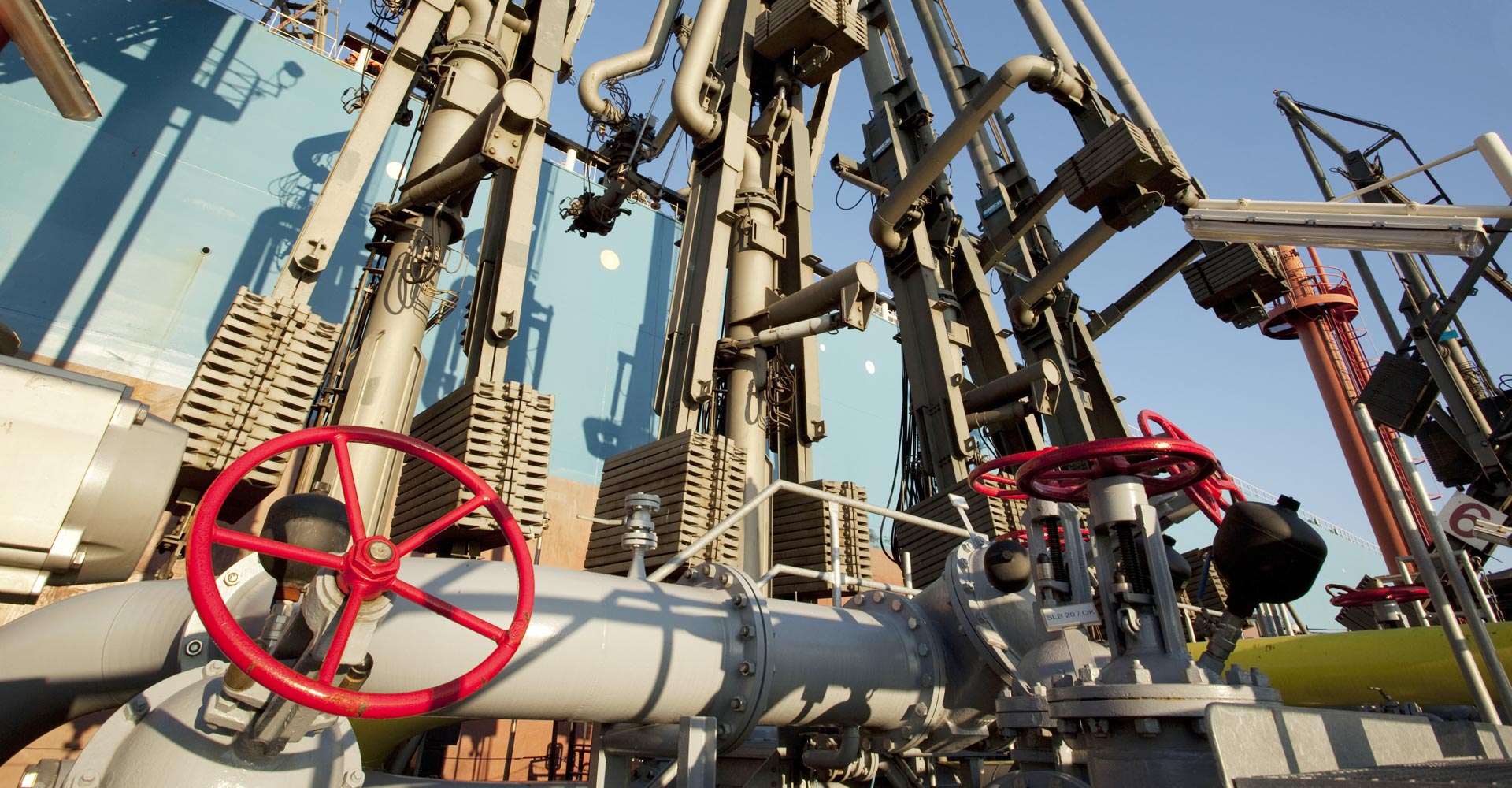Marine Loading Arm
Imagine a ship or a barge which is moored securely alongside a jetty due to the dynamics of the changing tide and the weather conditions, the vessel follows these movements. The question is how to transfer bulk liquids from the tank terminal to the vessel (and vice versa) given these conditions. To secure a connection marine loading arms are used. Able to handle both liquids and gases, the loading arms are particularly useful for transfers at higher loading rates (>500 cbm/h) and pressures.
Although the arms can especially be tailored to the different circumstances at the port where they are installed (e.g. vessel size, cargo flow rate, jetty design, required operating envelope), one thing all loading arms have in common is that they are equipped with an articulated pipe system with rigid piping and swivel joints which enable them to follow the movement of the vessel moored alongside. Many loading arm systems feature quick-connect/disconnect fittings, which significantly reduce the connecting/disconnecting time. Gasket arrangements are required to provide a secure seal on the ship's manifold flange.
Before the loading arm is disconnected, it needs to be drained. Most loading arms can be stripped empty with pumps. Last but not least, depending on the product to be handled and the expected maritime and/or weather conditions, loading arms can be equipped with emergency breakaway couplings that prevent any spillages or environmental hazards in the event of an emergency.

Oiltanking and its tank terminals provide comprehensive logistics solutions for the storage and handling of petroleum products, chemicals, gases and other products.
Status: August 2013
All information subject to change. Errors and omissions excepted.

